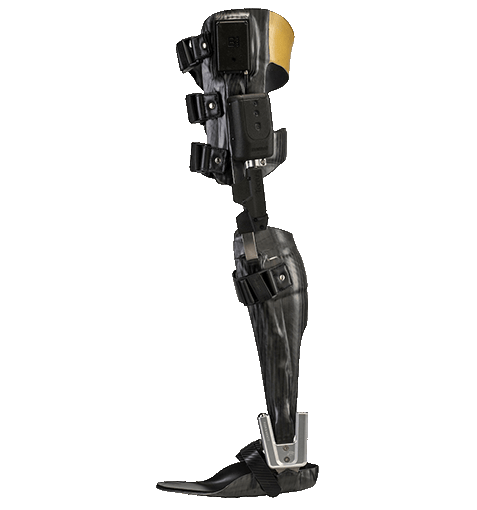Tectus®

Introducing Tectus®
Tectus® is a life changing intelligent orthotic device, that enables people with partial lower limb paralysis to walk more easily, naturally, and comfortably with increased confidence and safety.
Key Features
- Controlled standing support; Allows fully supported standing for as long as needed expending less energy & decreasing muscle fatigue
- Remote control and digital display; Full visibility of device status, with option to control via a discreet remote control
- Small, lightweight, modular design; Comfortable, easy to wear and minimally invasive
- 5 activity modes; Gives the wearer autonomy to move unaided to take part in everyday activities
- Biomimetic PRT™ technology; Provides a more natural walking gait than any other KAFO*
- The Gait Evaluation Monitor within the App, allows the clinician to analyse data & programme the optimum gait
Case Studies
Alex Slegg, 33, Seated Paralympic Skier
Condition: While serving in the UK military, Alex had an accident resulting in Cauda Equina syndrome following herniated spinal discs. He had many years of rehabilitation, and now 10 years on, he has right lower limb weakness, chronic sciatic pain, hip dysfunction, and lower back pain (all managed better with the Tectus®).
Alfie Wright, 50, Paralympic Seated Weight Lifter
Condition: Alfie had a left knee injury and ruptured left Achilles tendon. After multiple orthopaedic surgeries, unfortunately, with unsuccessful outcomes, Alfie has chronic sciatica hip pain from unsymmetrical walking with a locked KAFO (resolved with the Tectus®). She presents with left lower limb weakness and tonal pull inwards of her left foot/ankle.
Mick Kirby, 63, Steward at Shooting Range
Condition:Mick had a stroke affecting his left arm and leg and had an elective left arm amputation due to ongoing neurological pain with any contact. He has left lower limb weakness, knee hyperextension, and equino-varus pull of the foot/ankle complex with drop foot.
John Simpson, 71, Founder of Simpson Cup
Condition: John contracted Poliomyelitis as a young child, being left with extreme weakness in his left lower limb. 0 muscle powers besides power 3 in his hip flexors. He has been in a locked KAFO for many years, which creates significant gait deviations.
Who is Tectus® Designed For?
Tectus® has been developed for adults but could be suitable for teenagers (minimum weight 50kg).
Unlike prosthetics, Tectus® patients aren’t defined by their activity level. It’s their ability to meet the indications that will determine if Tectus® is suitable for them.
Indications
- Quadriceps weakness
- Flaccid paralysis of lower limb
- Resultant paralysis from orthopaedic injury or procedure
- Insufficient knee control
- Spinal injuries
- Stroke patients (mild tone only)
- Poliomyelitis
- Patient can initiate swing phase from their hip
- Hip flexion power 2+, Oxford scale
- The patient can stand independently
Contra-indications
- Unable to initiate hip flexion to initiate swing phase from muscle
power or with compensatory movements - Knee or hip flexion contracture greater than 10 degrees
- 10 plus degrees genu varus or valgus that can’t be reduced
- Significant muscle tone/spasticity (mild can be managed)
- Compromised trunk control
- Total weight above 100kg*
- A leg length discrepancy more than 15cm
- Muscle conditions that prevent control of an orthosis including moderate or severe spasticity
- Lack of sensory or cognitive ability necessary to operate and perceive device controls and indicators respectively
* Includes carrying weight
What is an Intelligent Orthotic Device?
Orthoses (also referred to as braces) are designed to provide stability and support to enable the patient to regain a level of mobility.
- The Tectus orthoses is a custom made Knee, Ankle, Foot Orthosis (KAFO)
- The Tectus Module is a hydraulic, micro-processor controlled knee joint
Tectus combines the orthosis with the knee joint to create a electronically controlled KAFO with swing and stance phase control.













